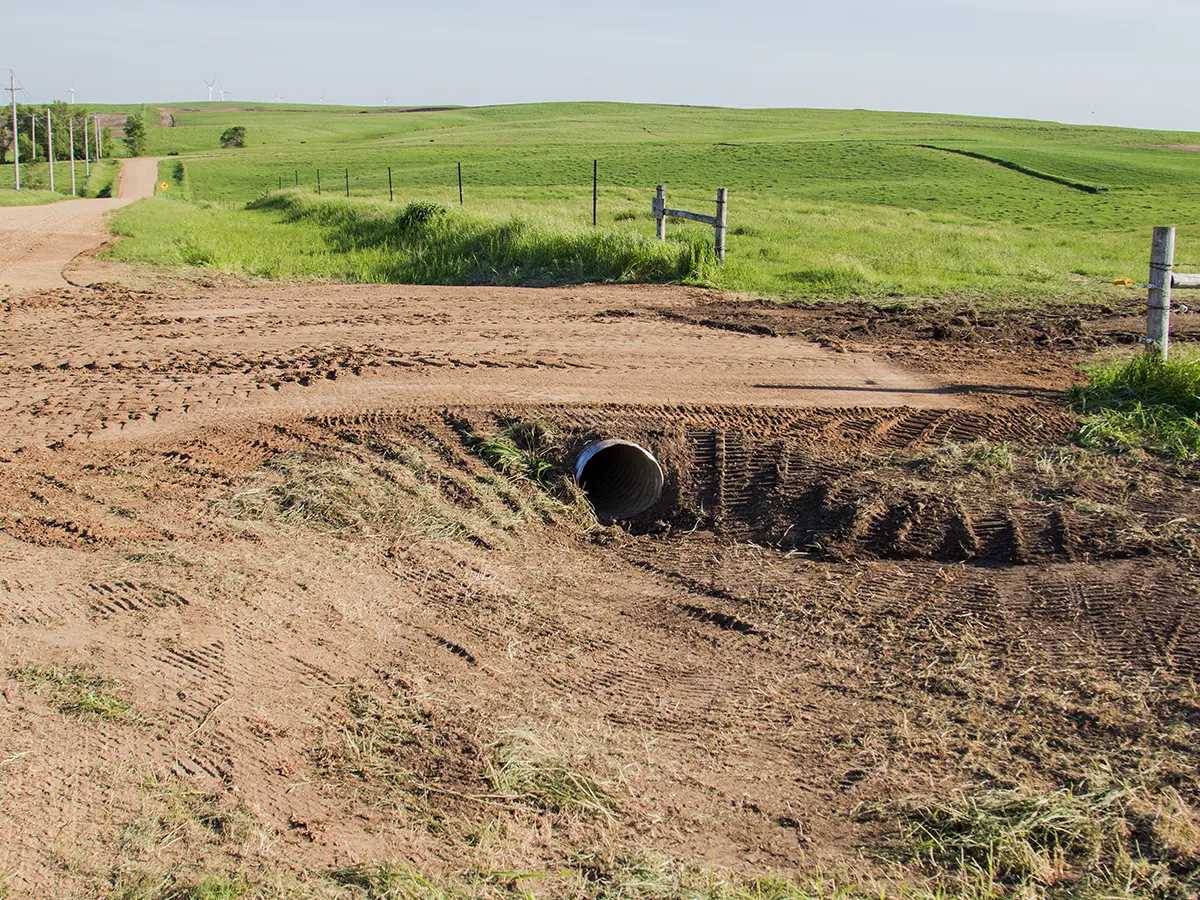Culvert Setup Made Easy: Step-by-Step Overview for Success
From picking the ideal culvert dimension to incorporating appropriate drainage procedures, each step in the installation process plays a crucial function in the capability and durability of the culvert system. Remain tuned to uncover the important actions and considerations that can make culvert installation a smooth and successful endeavor.
Choosing the Right Culvert Dimension
Choosing the suitable culvert dimension is critical for making certain reliable water flow and architectural stability in culvert installation tasks - Pad Construction. The size of the culvert straight impacts the circulation capability of water through the structure. A culvert that is as well small can bring about flooding and overflow, while one that is as well large might cause decreased water rate, potentially causing debris buildup and blockages
To establish the best culvert dimension, aspects such as the watershed area, top circulation rates, and hydraulic performance need to be carefully considered. Computations based on these specifications aid in choosing a size that can sufficiently take care of the anticipated water quantity while minimizing the danger of obstructions and architectural failure.
It is necessary to consult design guidelines and criteria to ensure that the selected culvert dimension fulfills the job requirements and regional laws (Pad Construction). By selecting the best culvert dimension, job supervisors can maximize water circulation, prevent possible problems, and boost the total effectiveness and longevity of the culvert setup
Preparing the Installment Site
Effective culvert installment demands meticulous prep work of the setup website to make certain optimum architectural assistance and performance. Before beginning the setup process, it is vital to remove the site of any debris, vegetation, or obstructions that might impede the culvert's placement. Ensuring a degree structure is crucial for the proper placement and stability of the culvert. This might involve grading the site to create a smooth, also surface area that can adequately sustain the weight of the culvert and any type of expected loads. Furthermore, correct compaction of the dirt below the culvert is required to avoid clearing up or shifting with time.
Moreover, it is necessary to think about variables such as soil composition, groundwater degrees, and ecological effects when preparing the installation site. Performing a comprehensive site evaluation can assist identify any prospective difficulties or dangers that may impact the culvert's efficiency. By putting in the time to prepare the installment website correctly, you can aid guarantee a successful culvert installation that meets structural needs and guarantees long-lasting performance.
Putting the Culvert Appropriately

The quality at which the culvert is put is essential for preserving an appropriate incline for water circulation. A steady incline assists avoid pooling and promotes effective drain. Furthermore, the culvert needs to be oriented properly to make sure that the inlet and electrical outlet remain in the appropriate areas. This orientation is crucial for the culvert to operate properly in taking care of water circulation.
Backfilling and Compacting the Soil
Proper backfilling and compaction of the soil around the culvert is important to make sure stability and avoid potential concerns in the future. When the culvert is appropriately put, the next important step is to backfill the area around it with ideal product. The backfill material ought to be without rocks, debris, and natural issue to prevent damage to the culvert. It is advised to use granular material such as sand or gravel for backfilling, as it gives great drainage and compaction residential or commercial properties.
After putting the backfill product, it is necessary to portable it in layers of uniform density. Making use of a compactor or a mechanical meddle, portable the dirt delicately to stay clear of harming the culvert. Compaction aids in decreasing the opportunities of settlement and makes sure uniform assistance around the culvert. It is vital to small the dirt evenly on all sides of the culvert to preserve its architectural honesty.
Proper backfilling and compaction not only supply security to the culvert yet also help in stopping dirt disintegration and keeping the longevity of the culvert system.
Ensuring Proper Drain Combination
Incorporating efficient drainage solutions plays a vital duty in site link the total capability and longevity of culvert setups. Proper drainage integration is important for managing water circulation, preventing erosion, and ensuring the architectural honesty of the culvert system. To attain this, it is crucial to make a detailed drain plan that considers variables such as the quantity of water expected, the topography of the area, and his response the kind of soil existing.

Furthermore, including features like erosion control steps, such as riprap or plants, can better improve the efficiency of the water drainage system. By meticulously planning and implementing these drainage services, culvert installments can work effectively and stand up to the examination of time.
Final Thought
Finally, appropriate culvert installment is important for maintaining reliable water drainage systems. By picking the appropriate culvert dimension, preparing the installment website, placing the culvert appropriately, backfilling and condensing the soil, and guaranteeing proper drainage assimilation, success can be attained. Following these steps will certainly aid guarantee the durability and efficiency of the culvert, inevitably adding to the overall success of the drainage system.